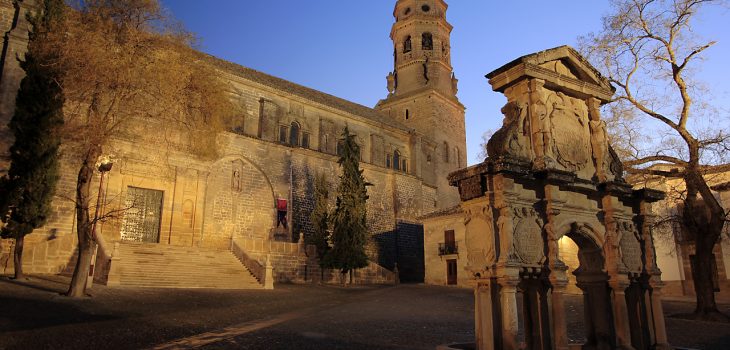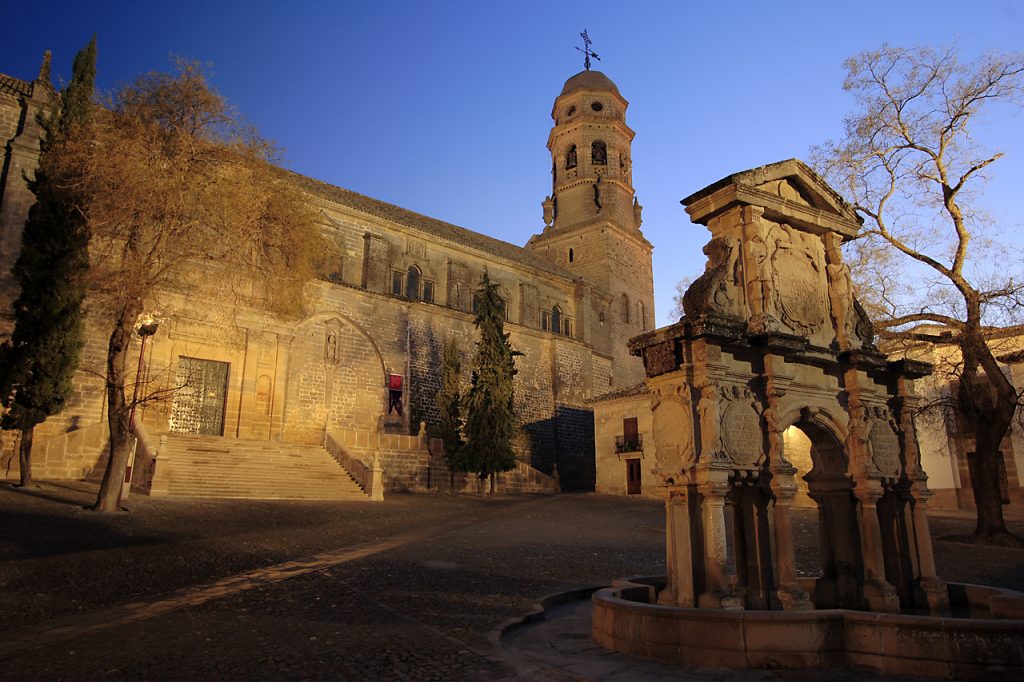
Plaza de Santa María and Cathedral

Machado let us learn that his hobbies were walking and reading. José Chamorro, in his work Antonio Machado in the Province of Jaén, attempts to reconstruct the poet’s itinerary on his walks: “the streets of Santo Domingo, San Pablo, San Andrés, Puerta de Úbeda, Arco del Barbudo, etc. .; highlighting “places as artistic and Spanish as the Plaza de la Catedral with its monumental fountain, erected with the majesty of a triumphal arch, a square as solemn as it is solitary with the moss of the old walls and the green grass between the slabs and stones of the pavement”.
During his wanderings through the historic center of Baeza, Machado has left some stanzas dedicated to this space, such as the famous poem of San Cristobalón.
NOTES III
III
Through a tall window
the owl flew
into the cathedral.
When he saw it was drinking
from the oil lamp
of the Virgin Mary,
Saint Cristobalón
tried to scare it away.
The Virgin spoke:
“Let it drink,
Saint Cristobalón.”
The Cathedral of Baeza, cultural Heritage since 1931, has been erected on successive buildings: a Roman temple, later a mosque, until its conversion to Christian worship in the 12th century. Since then it has undergone numerous architectural transformations up to its current state, with multiple elements from different periods, such as the Puerta de la Luna, in the Mudejar Gothic style.
The Puerta del Perdón( Forgiveness Door), in the Gothic style; or the main façade which is in the Renaissance style, which is its most dominant character. Andrés de Vandelvira collaborated in the Renaissance reform.
The interior of the Cathedral of Baeza also presents different styles, with Gothic pillars, ribbed vaults, Renaissance grills, Mudejar chapels and Renaissance chapels, as well as the main altarpiece, in the Baroque style.
Inside the Cathedral you can find the Cathedral Museum, which preserves pieces of great value and recognized prestige.